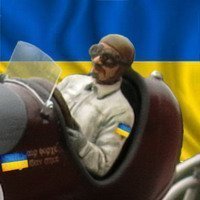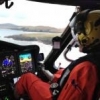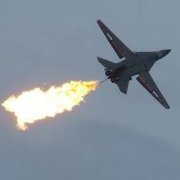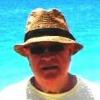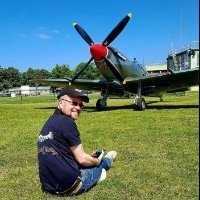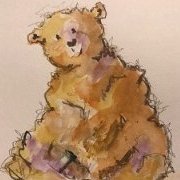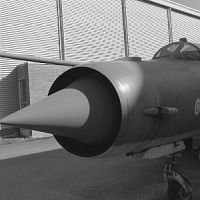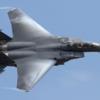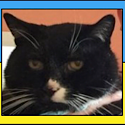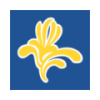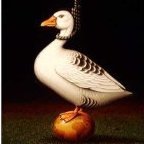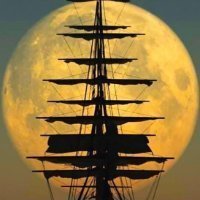Leaderboard
Popular Content
Showing content with the highest reputation on 29/07/23 in all areas
-
Folks, like bus, wait for ages and two come together. I've been on leave this week so I've had a chance to complete one that I had started and was just waiting for a chance to finish. I bought it last year when it was released if nothing else to encourage Tamiya to do more British vehicles. It is virtually OOB, except I couldn't help myself and replace the bar handles with brass wire and add some texture to the turret and the front armour plate. One thing I did do was pair down the birdcage sight as it was chunky. As expected for Tamiya, it assembled like a dream with minimal seam lines and zero flash. My only criticism is, unlike the Bronco offering, you can only do a WW2 version. It stayed in British service until 1960 in Hong Kong and foreign service until the 80's. Bronco includes the fish tail exhaust and the smoke dischargers for a Type B. Bronco also includes working tracks, but I must admit the link and length tracks Tamiya include are the best fitting I've ever come across. They were the perfect length. Paint is Mig SCC15, gloss coat Quick Shine, Vallejo matt coat, oil paint and terps pin wash, and Mig pigments.21 points
-
Hello colleagues! I got this broken aeroplane from an ancient Airfix kit for spare parts. But, apparently, I was lucky, the rebirth happened! ) The decal was found (under the Swedish prototype) and in general it's quite nice and rare in modelling (I have to build it).... Initially it was painted probably with car paint, because it was difficult to dissolve with strong solvent. And it dissolved together with the plastic. So I had to remove everything with emery cloth (together with the web sags on the wings and stabilisers). In the end, I mastered the imitation of webbing sag by retouching with a brush with slate powder. As you can guess, everything visible and not visible (except for the main elements of the kit) is homemade (except for the propeller and tank)). I used different diameters of kapron thread (thicker strings, thinner rods). Stands from bamboo skewers. Flags on the keel homemade. Paint and varnish brushes: acrylics GSI Mr.Color and Mr.Hobby, varnish Tamiya, + simple pencil. Airfix decal. Enjoy your viewing! Such a broken model I got for spare parts.... Then a little bit of the building process... The prototype was Marinens Flygväsende, school at Hägernäs, January 1924 (Code 6).16 points
-
No model building for the next week or so, as I'm back to Blighty for a family do, so in the meantime, I'm filling in with another phoenix from the ashes build, only this time it's not the fault of Village Photos. This is prior to then when I was using Photobucket. The photos are still there, but with the dirty great Photobucket logo right across each one. So anyway, about the model. This is the first AFV Club kit that I have built, and I was very impressed. It was built mainly OOTB, with just a few alterations, one of those being the removal of the brackets on the back of the sand shields (not used in this build), and reattaching them to the suspension units. The model was sprayed with Vallejo SCC15 and then the disruptive pattern was brush painted with Vallejo NATO Black. The decals are SKP rub down ones (recommended). Two photos of the turret interior before the lid went on. That's it. Thanks for looking and any comments. John.15 points
-
Been in London for a couple of days. The cause for one night was some barristering to be done. The cause for the second was Mrs F deciding that she deserved to come down for a break while I worked - and why didn’t we stay over a other night to go see Carlos Acosta dance at the Royal Opera House…. Anyway, I mention this cos it links in a tangential way to the next steps in the Defiant build; so, seeing as I’m in the train on the way back North and have nothing better to do, follow me through… We stayed as we always do in London at the RAF club and the RAF club has (funny old thing) an extensive collection of aviation art, with paintings of aircraft in every wall of every floor (we’re getting there - hang on), and I’ve always been interested in how the aviation artists capture the way the real thing looks - particularly the way the real (weathered, dirtied and worn) surfaces reflect the light; the answer of course is by using lots of tonal variation in the paint. It’s very much a dappled sort of effect, and the parallels with what we do obvious - and it’s equally obvious that it’s no new insight to mention it; but I’m a simple minded sort of chap and it helps me to be reminded what I’m trying to achieve (and why) when it comes to the next stage in my own set of finishing techniques, which is the application of oils. Now every man and his dog uses oils, but for better or worse and inspired by the aviation artists, this is what I am doing at the mo’: On the Dark Earth bit of the camo, I’ve basically fixed on dark brown, yellow ochre and medium grey oils. Tiny dots of oils, spread out into a patch and juxtaposed and then stippled and worked with a dry brush until all that’s left is a change of tone to the underlying base colour. On the Dark Green I’ve been using black, a dark dirty grey (‘starship filth’) and medium grey. Sometimes I’ve applied several colours at a time. But usually I do one colour at a time as I want to avoid mixing the colours together. Here I’ve added the yellow ochre after partially stippling/working the dark brown so there’s not much chance of mixing the two. And the effect I’m getting is this (not all the camo is done). The upper fuselage might or might not get blended in a bit more. Like with pre or post shading it’s difficult to decide when to stop; and what looks good from one angle doesn’t always look good from another - ditto with viewing distance. These piccies are in greater close up than the intended viewing distance. On the sharksmouth I’ve just done some dirtying up for now. Feel like the sharks mouth needs more work. Anyways. That’s were the old girl is for now.15 points
-
Okay dokey, I have some more Arma Hurricane to share with you This was about the best I could manage with removing the cockpit side vents. There are a pair of diagonal braces to install into the wheel wells once the cockpit side trusses are installed. Their inboard ends fit onto trusses as just as the peep through holes into the wheel wells. These are a bit fiddly, but they fit fine. With the cockpit sidewalls dressed, it was possible to glue up the fuselage halves and take a big step forward. So, I glued the two halves together. Close-up critique of the seams: Not bad, but not perfect either. I decided it would be easier to address the worst ones at least immediately fore and aft of the cockpit without the cockpit there to get damaged and filled with sanding dust. Before I filled them though, I thought I'd share how much of the cockpit is visible once the fuselage is mated to the wing. The fuselage and wing are only dry fitted together for these photographs: You can see everything except the bellcrank end of the elevator pushrod, so if you were thinking you'd be nifty and add rigging line from the bellcrank, don't bother as it's hidden. Before gluing the fuselage to the wing, I fitted the gun camera piece, which the instructions say to fair into the wing for the first marking option. I have dabbed on sprue-goo in places along the leading edge to fill imperfections and will sand that out carefully once it's hardened up. Once the fuselage filling was finished, and keeping in mind @Troy Smith's recent thread showing Temperate Land Scheme peaking through in places under the nightfighter paint job, and in particular behind the canopy I again decided that would be easier to do now without the cockpit in the way and airbrushed it with ACRN09 RAF Dark Green. I then glued the fuselage to the wing. Now I did say I wanted to honest at the start of this thread, so now it's time for me to be less than absolutely positive. The tailplane and elevator does need some care and it's not that obvious in the instructions that the elevators have a correct way up. The elevators model a tubular leading edge but it's half round. The instructions are silent on this. The flat of the half-round must face downwards to mate with hinge protrusions moulded to the lower half of the tailplane like so. It will not fit with the rounded side facing downwards; thus: It's not a big deal, but better to know about it and make a mental note. Similarly, the upper half of the tailplane is the first part I've encountered in the kit which doesn't actually fit. Again, not difficult to remedy but at the risk of sounding like a broken record, do dry fit before committing to glue... As the elevator fit the lower half just fine I joined the two together and filed down the outer faces of the upper half to match the lower half. Once that's done the elevator fits in just fine. The last thing to share is that I've glued in the fuselage belly piece. The fit is mostly ok, but I'm actually not sure if the forward end is ok or not, so I am away to look at detailed photographs of Hurricanes to educate myself. That's all for now folks, thanks for reading!13 points
-
Hi everyone, Here's another mistake some of you may laugh at or store in the back of your minds for later. I do not mind which I assembled the control column. Next, I offered up the control column to the cockpit assembly and it was nowhere near fitting, instead clashing with the V brace. If not sorted, there may be a likelihood the seat wont fit in on top of the pushrod to the elevator bellcrank (the upper tube thing with the bend in it, which on the real thing is there to ensure it clears the seat! The problem was that I misunderstood the instructions and failed to recognise the true intended location point for the bottom of the V brace on the rear wing spar. To avoid you all potentially copying my error, I've highlighted what I did wrong. It's another score for dryfitting before plastering things in sticky glue though, eh? This shows you how I had it assembled, and to assemble it correctly the bottom of the brace highlighted in yellow needs to be located in the socket highlighted in green. It's pretty obvious to me now how it should have fitted, but for whatever Human Factors type reason it evidently wasn't obvious to me the other day when I installed it. No harm done. Tamiya Extra Thin is fairly weak adhesive so it was easy to push the joint apart with the tip of a scalpel and coax it into the correct position. I felt the control column would be especially vulnerable like that so I pressed on to the next step by installing the seat and rear bulkhead to give it some shelter. I've smeared some oil paints around and brushed in some brown Tamiya weathering powder into the foot rests while the oils were wet to give the impression of someone's muddy boots having been there. I still have a wee bit to do on those seat belts. The scrap of Tamiya tape is just providing gentle persuasion of the side trusses to hug the bulkhead whilst the glue dries. It all fits nicely in to position (once the V brace is in correctly - ahem...). The last update for now is that I've started removing the Tropical vents either side of the cockpit. Here they've been cut away, leaving only two recessed lines to fill. Again, those lovely raised rivets are beautiful but oh-so-vulnerable so as you can see I've got the area masked off to hopefully minimise damage. A tiny dab of filler applied with a tiny artisanal palette knife (which definitely was not a small scrap of plasticard lying closeby on the modelling bench).13 points
-
Long time lurker on the forum from Italy, I decided it was time to bring shame on me on with some low quality build! Pretty fast and funny build, 6th kit of the year and the 8th I've built as a wannabe modeler. It's a nice kit coming along easily with almost no putty. Sadly no cockpit details (i added some with plasticard since the cockpit was open) and the landing gear bay is empty (and this Is inaccurate). Since I'm not a god with the airbrush and I wanted to do an easy kit after two german mottling camo i tried the Eduard decal sheet for the smoke rings and It turned out a fast, easy and cheap solution: they are top quality, pre-cut, easy to bend and with no silvering, higly reccomended if you plan to make a smoke ring Macchi and you are not confident in 1/72 to use an airbrush. All painted with Vallejo model air, weathering with Vallejo pigments and abteilung oils. Thanks for watching!11 points
-
I built this one as part of a MGB with @Dunny and @mark.au and I had a lot of fun. My grateful thanks to them for letting me join in. For a kit that was originally released in 1974 it went together beautifully. Primed with Tamiya Neutral Grey. Painted with: Tamiya Flat Aluminium, Khaki, Olive Drab, Rubber Black, Nato Black, Clear Red and Clear Green. Hataka Golden Yellow Washed with Flory Dark Dirt, Various Windsor & Newton Oils thinned with lighter fluid. Oil dot filter with Windsor & Newton White, Green, Paynes Grey, Burnt Umber, Burnt Sienna and Abteilung Smoke. Clear Coated with Windsor & Newton Galeria Matt Varnish tinted with a couple of drops of Tamiya Deck Tan. All in all a nice kit. Thanks for looking, Cheers, Alistair11 points
-
Thank you all for the interest in this build. No pressure then 😊 Technically, this is an RAF aircraft. I’ll keep an eye out for your upcoming WIP 😉 I had some time this afternoon to make a start on the Uhu so I knuckled down to what is, as everyone who reads my WIPs knows, my least favourite task of cockpit building. It’s not that I don’t like cockpits actually, it’s more that it’s a picky task sitting between me and assembly and airframe painting. Not the least favourite task then, just the least anticipated. I begin, as usual, with a black base, then a base coat of RLM66 dark grey followed by a dark goop wash. One of the more clever elements of the kit is the cockpit base being cast metal thereby including the weight necessary to prevent a tail sit. I fitted the plastic to the metal with a simple press-fit which was sufficiently tight to not need glue. I set the main cockpit assembly aside to set up and worked on the instrument panel. The process was the same to start and then I applied the decal. With them well settled I carefully painted a few of the bezels with a rust colour based on photos from the NASM preserved Uhu. After a dry brush I finished it with a drop of Future in each of the instruments to represent the glass. Super close-up doesn’t do it any favours but I’m happy enough with it, especially as the canopy will be closed. Next, the radar operator’s instrument panel. Same process with the additional exercise of using a needle to scratch through the paint in some of the instruments to represent the numbers/needles/relevant info. I returned to the main tub and started the detailing. Again, working from photos I added colour to various knobs and dials. A dry brush and detailing with silver pencil brought it to a satisfactory level of busyness. I carefully painted the head rest leather with earth brown and gave it a dry brush with a generic beige. When that was dry, I finished it with a diluted Future coat to give it a little leathery sheen. I then brought the main components together (though not yet glued, nor is the control column, because I still have to do my - literally, this time - least favourite task, seatbelts) to asses the collective impression. I’m quite pleased with this one. German cockpits are pretty easy because the RLM66 is a great canvas to work with. Next, I need to go through the same process with the cockpit sides in the fuselage halves. And the seatbelts. Then, I can close up the fuselage and start work on the wing assemblies. I’m hoping to be able to get to that happy place by close of play on Sunday. A bit like the Ashes. Cheers.11 points
-
Hi guys here is my Dorawings Curtiss Wright CW-21 Interceptor, really a nice kit. I used decals from Dutch Decal to depict a machine from 2-VLG-IV, Royal Netherlands East Indies Army Air Division. Erik10 points
-
Rather than go through a whole build description, I think enough has been written about this model recently, and, suffice to say in my opinion it's all true. I was a little concerned about the rivets at first particularly how decals would go down on them and although it was a little awkward at times they seemed to go down OK with plenty of Micro set and sol. Of course, (and with no disrespect to Joe) the decals were possibly a little more prone to silvering and had quite a bit of film around them which I trimmed as best I could. Anyway, it's straight from the box which included the 3D printed exhausts and guns. The only extras were a set Eduard seatbelts and some Barracuda wheels featuring the much disscussed up locks on the hubs. It's interesting to note how prominant they actually are. Parts seem very tight on tolerance but everything fits together perfectly. The only issue I had which was probably down to me anyway was the forward wing root but nothing a little filler didn't cure. So, thanks for looking and roll on the Tropical version which I beleive is available for pre order. IMG_4882 IMG_4881 IMG_4883 IMG_4884 IMG_488010 points
-
This is my second Arma Kit after the 1/72nd Hurricane and I cannot speak enough about this manufacturer. This kit was a dream to build and a wonderful detailed kit. Built straight out of box across the board this was a modelling pleasure . Here was my surprise..Prop and Spinner were the final pieces needed to balance to model on tricycle gear..that was cool (scary at first). Decals were great as was everything in this Kit. Gunze paints and overcoats. Some weathering with pigments only. Thanks for Looking Comments Always Welcome Cheers Bill9 points
-
Hi All, I didn't make any progress last weekend as I was waiting for some essential supplies turned up, including this: The reason for this becomes obvious when one studies some photos of the bomb aimer's position (photos for discussion only and will be removed if requested): Some lovely detail in those photos! Before I did any more work, I have prior form with Special Hobby kits so a dry fit of the glazing was in order: All looks pretty good! I then went ahead and added the ribbing: A bit oversize but it'll do the job. I'm about to start throwing some paint around so might add another update later, Thanks for looking, Roger9 points
-
That photo of the ASaC7 is all the more confusing if you’re not sure, because the colostomy bag is in mid-travel from horizontal (on the ground) to vertical (airborne), presumably because the aircraft has only just taken off. Here fully horizontal, but fully inflated: Here (top left, if you can drag your eyes away from the expensive cock-up to starboard), deflated and shut down: I don’t seem to have one to hand of a Bagger with its Searchwater fully deployed, but there are lots around on the interwebs8 points
-
This morning, after having corrected a few minor flaws in the Kamikaze's surface, I was taking it over to my spray booth for some touchup Mr Surfacer when I dropped it on the floor, breaking the port horizontal stabilizer 😟 So (after a few choice words), I re-glued it in place, filled and sanded the join, sprayed some more Mr Surfacer, etc. Finally, the Kamikaze was ready for a coat of silver paint. I decided to use Tamiya AS-12 "Bare Metal Silver", as I had seen another modeler use this for his build, and I like how it looked. While decanting the AS-12 from the spray can I spilled the receiving bottle, creating a large puddle of paint on my workbench and workroom floor. 😱 Fortunately, those were the only things to be drenched in paint (other than my hands). That's two muck-ups in one day, so maybe I should just take a nap! I cleaned everything up and finished decanting the AS-12. I won't be able to spray the decanted paint until the dissolved gas finishes bubbling out, so I put the Kamikaze aside (carefully!) and went back to work on the Dewoitine. I glued the main landing gear legs to the wheel pants, using a drawing to get the correct angle (the kit instructions are absolutely no help in this regard). I then glued the port landing gear to its wing, again referring to the drawings for proper placement. (As an aside, I had to drill holes in the bottom of the wings where the landing gear attach. The lower wing has marks for where the gear attaches, but no holes). After that wing's gear is solidly attached, I'll glue the starboard gear place and eyeball its angle to match its counterpart. One last item before I sign off for today. This aircraft had two machine guns mounted in pods under the wing. The kit includes the pods and separately molded barrels: However, there are no holes in the pods to accept the barrels, and the barrels themselves are nearly unusable: I drilled out the gun pods and inserted Albion Alloys aluminum tubing (0.7mm) for the barrels: Much better! 😅8 points
-
A long time between posts over here on Britmodeller! This is the venerable Airfix Fw-190A kit in 1/24 scale. It certainly has a reputation, and with good reason, but I have really enjoyed this build from start to finish. I actually have had this in the stash since about 1998 but never has the courage to tackle it. Flash forward to 2023, I decided enough was enough, let's just build it and have fun! If I bugger it up, well I learned something and will move on. In the end, this was one of the most enjoyable builds I have done. In fact it started a stash purge, with half being sold off & replaced with 1/32 & 1/24 kits. Special thanks to @Bonkin, his build here on Britmodeller was the inspiration for me to give this a go & to Peter @airscale for creating a brilliant set of 3d printed wheels for the kit, something the kit really needed. The kit suffered from a very flat main wing & a warped fuselage, which all was bent back into shape via a dunk in hot water & a wooden main spar was epoxied in place to keep the dihedral in the wings. The cockpit was upgraded, using the Airscale Fw190A decal for the IP, his 1/24 Luftwaffe belts & luftwaffe placards throughout. The landing gear was detailed and the bays were completed as the kit only supplied the back of the wells and the covers that conceals the engine. I also found the engine didn't protrude from the cowl for me like others have reported, I did reduce the length of the fan though and trimmed a little off the engine bearers, just to be sure. All paints are SMS acrylic Lacquers in the classic scheme of RLM 74 & 75 over 76. All markings are painted on, other than the stencils, which are the Airfix original decals. The aircraft depicted is Wrk Nr. 2676, Coded KM + EY of III/SKG10 based at El Aouiana, Tunisia. I found about 8 pictures of the aircraft when it was found abandoned at the airfield & all of these helped with adding the appropriate details. By no means is this a perfect rendition of this Butcher Bird, but I am pretty happy with it.7 points
-
Hi everyone, I assembled this Kitty Hawk kit: by Rodolfo Masti, on Flickr to make the Etendard IVP: Source: www.fox-two.com Click here for the WIP: Thanks for Looking ... Comments Always Welcome 😉 by Rodolfo Masti, on Flickr by Rodolfo Masti, on Flickr by Rodolfo Masti, on Flickr by Rodolfo Masti, on Flickr by Rodolfo Masti, on Flickr by Rodolfo Masti, on Flickr by Rodolfo Masti, on Flickr by Rodolfo Masti, on Flickr by Rodolfo Masti, on Flickr7 points
-
Hi all, the latest Cobra by Special Hobby is this AH-1S "HueyCobry" in 1:48. Ad some Quinta 3D decals, Eduard PE`s and the helmets out of the SH Hi-Tech Kit of the AH-1G. Decals are OOB: 503r Aviation Company based at Hanau/Germany 19797 points
-
Apologies for the late reply @FunkyChiken Thank you, and the answer is that it lives on a stand under a very big plastic box except for the few minutes it's being painted for each coat... So, refreshed from holiday, and mojo working again, I tackled some of the jobs that I couldn't face before... I hadn't realised how much of the inside of the engine bay would be visible, so that had to be painted orange to match the rest of the car. That entailed a lot of masking, and would have been so much easier if I'd just done it at the same time as the rest... Also the window trim needed doing. The all-chrome side trim is A*Stand "Bright Aluminium" over Mr Color Black and Gloss clear. The A*Stand paint is near-as darnit Alclad. It calls for "one medium coat at 10-15 psi, and that's what I gave it. And It works really well... The front and rear screens are Molotow chrome pen over Edding 330 black marker, because there's a lot more rubber in those trims. With luck, I won't need to mask *almost the entire body* again... Other than trimming off a lot of carrier film, the instrument dial decals worked very well. Boy, do I need to dust that interior? What you can see above as well as the dust is multiple different "blacks" in action to give some variety and texture to the cabin. ...I'm starting to believe this might just work... best, M.7 points
-
Hello again Chums, Jeff,thanks old fruit. There has been a flurry of touching in of paint removed by handling. The forward Director Control Tower has been fitted.The bottom plate mounts on the cylinder on the bridge deck and the wall behind it so paint had to be scraped away for the glue to work. The screws have had another lot of ground up pencil lead.This was put on with a white spirit moistened brush and then,once dry,spread about and polished using a dry brush. I'm quite pleased with these,to the naked eye they look the part. Anyway after a squirt of Vallejo satin varnish to unify the finish I'm calling this one done. These next piccies can be enlarged,they are full size straight out of the camera. What would I do differently? Not work to a deadline for a start.Some of the painting methods didn't make for an easy life so the approach to that could be altered.The next one will have the build sequence better planned. This build took me out of my comfort zone in several ways,the kit itself,a new to me camera which took some setting up and a whole new and unfamiliar area of terminology and research which I'm still out of my depth with.The only part of the paint job that was airbrushed was the varnish coat at the end,I've enjoyed reaquainting myself with some long neglected brush skills. My thanks to Adrian,Martin and Tony for doing their bit,Enzo for herding cats and particular thanks to Jeff for some welcome and necessary enlightenment.7 points
-
Dark Earth added to the upper surfaces. The demarcation line on the fuselage might be a tad high, but I can live with it. Thanks for looking. AW7 points
-
7 points
-
Good evening groovy people. So... the results of the jury indicated brown-orange was favoured over buff. But it's my Range Rover so I've done this instead: I know, I know, my taste is impeccable but I can't help that. An interesting point about 3-door Range Rovers is the front seatbelts are mounted on the seats themselves so it's easy to add belts. Happy days. You may like it, you may not, but here it is anyway. It took ages to do this. Spot the deliberate mistake. Due to my usual modus operandi of completely ignoring the instructions, I now return to stage one and start putting the chassis together. The ladder chassis is separate to the floorpan, as per the real thing. However, it's pretty simplified, it shows its age. High build black primer makes a passable representation of underseal. Before I go any further I need to decide whether to go right or left hand drive. That's normally not a question but Range Rovers were expensive things in the late 70s and bespoke Range Rovers were even more pricey. I feel this car may have been spotted in warmer climes. As we all know, these things matter. ANTEATER WEEKEND STATUS7 points
-
Bernd Rosemeyer’s Auto Union Typ C that he used to win the German Grand Prix 1936. This time in 1/12 scale, built during six months from the recent MFH kit. I have enjoyed the build process a lot, even if some things were not easy. The WIP-thread is here if you want look deeper into the process. I will never be much of a photographer, but here is a (rather long) batch of photos of the finished model, and finished parts of it as the work progressed. I hope you will enjoy.6 points
-
Hi folks, There are a few firsts for me here: my first 'Vehicles' RFI, my first horsedrawn vehicle model and my first ever wooden (mostly) model. Here goes! As a plastic aircraft modeller of over 40 years I wanted to try something different and, frankly, something a little more environmentally friendly. I'm also a folk museum volunteer with a strong interest in the work of the traditional wheelwright, so I decided to try my hand at making a large-scale cart model from commercially-available plans. I suspect like most modellers who have a go at this type of model, I chose to begin with a relatively simple tip cart or Scotch cart, in this case to the 1980 plan drawn by John Voisey assisted greatly by John Thompson's excellent book on building model carts and waggons. Experienced model wheelwrights will doubtless roll their eyes at 'yet another tip cart', and probably groan at my relatively shoddy workmanship, but I've enjoyed the process and learned a huge amount along the way. For the uninitiated, a cart has two wheels whereas a waggon - yes, double 'g' is normal - has four wheels. Wooden wheels were always 'dished', that is to say that the spokes leaned outwards from the hub (called the knave or stock) to form a saucer shape in profile in order to reduce the damaging sideways forces set up by the side-to-side motion of a walking horse. The axles drooped by a similar angle to ensure that the lower spoke was perpendicular to the ground to carry the weight efficiently. Apart from the wheel rims, the sections of which were called felloes but pronounced and sometimes spelt 'fellies', the cart was constructed mostly from deadfall ash collected during dog walks and processed on a vintage Picador Pup hobby lathe system bought specially for the purpose. (The circular saw attachment deserves HUGE respect!) The spokes were hand-carved from deadfall oak, also collected on dog walks. Metal fittings were made from brass sheet and rod and painted gloss black; the full-size fittings would have been of wrought iron, made by a blacksmith, and also painted gloss black to inhibit corrosion. The square nuts were made from plastic card. The impression of nailheads in the boards in the bed of the cart was created by drilling tiny holes and inserting very short lengths of cut fusewire. The wheel rims, or tyres, are of tinplate cut from a large tin, rolled smooth with a rolling pin on a new cutting mat and thin cloth and gently curved to shape. They are, however, simply too shiny; full-size tyres would have been heated in either a ring-shaped fire of wood shavings or a dedicated furnace before being shrunk onto the wheel with copious amounts of cold water. This process would have left them blued rather than shiny, so I have an idea for replicating this on future builds. This style of cart used a tip stick, or sword-and-pin, to set the cart in an appropriate tipped position. The wheels are also removeable in the original manner; sliding the tiny latches out of the even tinier staples on each knave allows the small chocks to be removed, which gives access to linchpins that hold the wheels onto the axles. The tail board is removeable and is normally held in place by a small latch on each side. Finally, the display base was cobbled together (sorry...) from aquarium gravel with some bits of garden moss and tufts of garden twine to give the impression of vegetation. As mentioned earlier, it's unlikely to impress experienced model wheelwrights but, as a first attempt, I'm quite pleased with the result and have thoroughly enjoyed both the experience and education. My next horsedrawn project will probably be a larger Vale of Pickering-style Yorkshire waggon from the John Thompson plans range (there are two at the folk museum at which I volunteer), but I think I'll be heading back to my plastic aircraft comfort zone for a little while first! Thanks for looking (and for making it this far). Jon PS: Here's a selection from my reference library. Anything by J Geraint Jenkins is invariably excellent, the orange Arnold book is a superb construction reference and George Sturt's book is a bible for anyone who is interested in the detail of the wheelwright's trade (Sturt inherited a Farnham wheelwright business from his father in the late 1800's).6 points
-
This is my completed 1/48 S2 Buccaneer from Airfix. There were high expectations for this kit pre-release, and it doesn’t disappoint. The engineering and the surface detail are far better than many of Airfix’s other recent new tooled kits. There was little filling and sanding required and it’s very close to Tamiya quality. While the kit is for either the S2C or S2D with all 4 kit options in the all over dark grey, I decided to build it as an early S2 as flown by 801 NAS from HMS Victorious in 1966. Two reasons. One, I just think the dark grey/white scheme looks better and two, my Dad was on the Victorious in 1963-64 and worked in the air engineering dept on all the aircraft carried on board, although the Bucc’s were S1’s in his day. Paints were: Mr Hobby H333 semi-gloss Extra Dark Sea Grey (gave a better colour than XF-54) X-2 Gloss White Vallejo Model Air Dark Ghost Grey Vallejo Model Color Medium Sea Grey XF-7 Flat Red Various blacks, silver, aluminium. Weathering was minimal. In all the reference photos and videos I had they looked quite clean Flory Dark Dirt and Grime washes and Abteilung 501 Smoke. Most of the Buccaneers of the period had all white slipper tanks, but 230 had grey/white tanks. I used Xtradecals X48228 and common decals from the kit, although most of the stencils I didn’t bother with. Otherwise, it was OOB. Thanks for looking Cheers6 points
-
Uncertain T Scratch. I built this body, measurements taken my resin build a few years ago. It's boxy, Plasticard sheet plus three sizes of Plasticard square section rod/tube. I've now to do an extensive search through numerous boxes of spares, to complete. Fingers crossed that I complete it! The trim ring is for the round rear window. The engine parts, the engine block is out of shot in a vice..6 points
-
Very leaden skies at IWM Duxford yesterday, but it was still a good day for the USAAF Flying Day, hanging out and catching up with some warbird mates. Some great flying, Sally B looked particularly energetic, the Bearcat was a powerhouse, and the Lockheed Electra Junior made a fab looking pair with the Spitfire PR.XI. Next up today, I'm just about to leave home for my first visit to Old Buckenham, hopefully the weather will be kinder to photography!6 points
-
I'll be following your build with interest, tegethoff - especially how you fix the forward fuselage to the main body. I had a lot of trouble with mine.... http://www.flankers-site.co.uk/model_m-55_modelsvit.html I took a few pics of it at MAKS.... it is a large machine.. Ken6 points
-
I'm aware of Slipknot, and Joey Jordinson is REALLY impressive as a drummer.... the eting I found wierd was how what had been a tottaly underground sound (as in mid 80's hardcore/thrash/noise/metal) was almost pop, I recall plenty of what looked to be 12 year old wearing Slipknot hoodies... One of my mates in Kent was a big Slipknot fan, I recall the DVD, but what i rally wanted was a static camera on the the drummer.. So todays of easy going toe tapping is Raw Power. I'll @Giorgio N @Bonehammer just as they are from Italy... And perhaps may find this ramble amusing and/or confusing.. or just skip to the modelling bit.. Italian. Yes, I recall when first heard the idea of Italian hardcore punk I was dimissive... but it was a big scene, and mostly 'sung' in Italian.... by 'sung' the Italian singers erm, scream... there is even a film about it. https://youtu.be/g2idFNnFhjM It's interesting, but suffers like the film about Chicago punk, from requiring an idea who these people are, I know some of them.... A mate moved to Bristol in the early 80's, and was part of the punk scene there. Before anyone laughs, they had some big names on the scene, Vice Squad, Chaos UK (who I met through him, and toured Japan in 1985) Disorder, who I though were the worst band on Punk and Disorderly, but now rate their early records, and Amebix. There was a Bristol HC label, Children of the Revolution, C.O.R, https://www.discogs.com/label/33219-Children-Of-The-Revolution-Records who put out a lot of interesting records, including a couple of split LP's of Italian bands, and Kina Lp as well it seems. CCM/I Refuse It - Permanent Scar https://www.discogs.com/master/221092-Negazione-Declino-Mucchio-Selvaggio https://www.discogs.com/master/467530-Kina-Cercando The label owner, became a Buddist, and stopped running the label. Mnay years later he ended up in Brighton. Through my old mate I went to see him, as he had some damaged returns from the label still, mnay were just split seam on the covers, so the vinyl was new. Sadly in between my first and second visit, his basement flat flooded and soaked most of them... Anyway, I asked about how he ended up doing the Italian records, he said he'd toured Europe in 1981 with Disorder, and been to Italay One funny comment, he said even Italian punks were stylish and well dressed. Apart from Wretched, who were scruffy... and "I sniffed glue in a squat in Milan with Wretched" Wrecthed have to be heard to be believed oh, flippin eck, there is even some film.. https://youtu.be/QsMk4kLZZRA it's not exactly hi-fi.... Not that their reords are either, well, they went a bit rockier on their 2nd LP, but the earl;y stuff,, well, sounds like the drummer is playing in a different band... here's the now ultra rare Wretched/Indigesti Split EP https://youtu.be/AfqLZWu_1gQ Indigesti made a really interesting LP in 1985, https://www.discogs.com/master/128667-Indigesti-Osservati-DallInganno one of the big problems with hardcore, was waht do you do next, unless you are Japanese and nuts... how do you progress? Some go metal, some go pop, this is an example of someone getting more complex and keeping the speed and power... See also CCM - Into The Void LP and Articles Of Faith - Give Thanks LP... Crickey, this was really about this,,,,, Raw Power were pretty early, their first LP, You Are The Victim, is from 1981, and suffers from a studio not understanding what they were doing. They are basically Italy's answer to Black Flag. A better idea is on the Burning Down The Factory CD of their 83 demo and live 83. Check out the opening howl on this from their 83 demo.... https://youtu.be/YWpqa2LCwJ4?t=596 They even toured the USA in 1984, and their 2nd LP, Screams From The Gutter, https://youtu.be/0_PUu8DtDUA was produced by Paul Mahern of the Zero Boys. (who made one killer LP in 1982, Vicious Circle) so it's proper recording by a sympathetic producer. They went more rocky/metal on the 3rd Lp, After Your Brain. It has no presence in memory.. At some point, i found this, there is video from the 84 US tour, but it's really poor sound, this is, erm raw, https://youtu.be/fFKqAFPmOp0?t=602 Check out the the rhythm guitar player running on the spot 11.43..... Anyway, the sheer exuberance of the band shines through.... @81-er Anyway.... bitty progress. Replacement port roundel added, and then what seemed to be endless paint touch ups.... the yellow round the 2 is a bit rough, but I'm hoping a light buff and matt varnish will help that... Also painted the prop, and made a tailwheel, it's from a Spitfire, the camo drawing that @Magpie22 sent has a note of an 8 inch tailwheel, as best as I could see the Spitfire one was 9 inch.... so some scraping, inverting the way up, and a bit of brass rod.. Annoyingly yhe drilled hole is a little off centre... I need to see if worth plugging and redrilling or not. The rudder is a push fit, I used a bit of the same brass rod as I using as a handle, filed a flat to slot into the wider ruidder base, and it psuh fits into the handle hole...Rudder has not been Kleered.... The spats are pushed on, and need more yellow and tyres painting. I suspect I'll need to fair them in with some PVA. Opened up the rigging holes from paint. You can see white dots from that. Still need to drill the fuselage rigging holes. Played with rigging, it's all pretty short, so straight sprue will stay straight, and on the underside, the wheel hubs are hollow, so a longer bit can be thread in. Same with the fuselage mounting. Had a play, found a flattish sesction of silver sprue from an Airfix B-25, and streched it, I'm hoping it has a flying wire section, but it's a decent wire colour as it is. I've a got a length of it hangin up to keep it straight so we'll see how that goes. the vac canopies are roughly trimmed, the upper wing rigging goes through the front canopy base... so I forsee more faffing about and walkround study. Thanks for reading and commenting cheers T6 points
-
looks like this source unknown. Note the weathering, there must be over 50 shades of grey in this view alone! cheers, Mike6 points
-
Hello, I promised @Toftdale to show how I paint wood pattern with oil paint. I use the "Oilbrushers" from Ammo-Mig for this, I start with a sand or light brown base.... After this, I apply several colours of oils...dots spread out. Leave it alone for 20-30 minutes. Now you need a soft flat brush, a few drops of thinner and some tissue paper. Dip the brush in the thinner and wipe it dry on the tissue paper. The remaining traces of thinner in the brush will be enough. Carefully spread the paint over the surface. Try to keep some of the colour variation. Leave it alone for 10-20 minutes again. Dip your brush in the thinner again...and wipe most of...again. Too much thinner will ruin your effort! Gently move the brush over the surface...remove little bits of oil paint this way. Wipe off and repeat until you're happy with the result. This is what I got... The wheel with the sand colour base... And the wheel with the light brown base... It's a matter of trial and error...dare to just do it. The worst that can happen is when you remove too much paint. When that happens just wipe it off and start again. Advantage of the "Oilbrushers" compared to artist oils...it dries much quicker. 24 hours compared to a week or so. Couldn't take good detail photo's with my phone, so I treated myself with a nice macro lens for this purpose.😅 More soon, Robin 🙂6 points
-
Hi Morfman, Is this just an inkling to build something different or is there an underlying maritime interest which may kick in? Answer not really required - it's just to help frame what's right for you to decide yourself. Scale: There are numerous scales around, but some are very much alive whilst others are dead with only old and often crude kits available. For radio control, the popular scales are 1/48 for small vessels like Motor Gun Boats and Motor Torpedo Boats etc. 1/72, 1/96 and even 1/192 still exist for larger r/c models. For static scale, the current popular scales are 1/200, 1/350 and 1/700. There are legacy (i.e. dead scale) kits in 1/400 and 1/600, and some people enjoy Scratchbuilding at 1/1200 and smaller. Subject: By far the best choice is available in 1/700. It's relatively affordable. You can build up a large collection of different ships and even the same ship at different times in different colours. It's somehow much more fiddly than the old 1/600 was, and if being objective, some details like AA guns and railings start to look out of scale. The next most popular is 1/350. There's a good choice but nothing like in 1/700. They're more expensive. The size is twice as big in any linear dimension and eight times the volume since that's how cubic powers work. You've much more scope to add detail, but also may feel more need to add detail. 1/200 is a relative newcomer, and choice is limited to a small number of Capital Ships really. Price is fairly high, the models are more centre pieces you build one of, or live alone and have nobody else's preferences to consider in filling up your home. They can look rather toy-like without additional detailing. Pitfalls: As for subject, battleships are famous and everyone likes a battleship. In WWII guise they are large projects though often with dozens of AA guns etc and lots of complex painting. Many half-built battleships languish in shelves of doom. A destroyer might be a good place to start, being smaller, simpler but not underwhelming, and you are more likely to finish it. Suggestion: If this is just a one-off thing and you don't expect to spark an interest in building half the Royal Navy, then one of Tamiya's relatively modern destroyer kits like their 1/350 Kagero or Yukikaze is a nice, well-thought-out kit of an attractive WWII Imperial Japanese Navy destroyer which doesn't require you to treat every paint call-out with extreme suspicion.6 points
-
Fixed and fitted. The view below this morning. And 90º round. I think that stops enough drooping for my liking. Onwards to the dark green uppers next and the first transfers of this build on the blades' trestling lines.6 points
-
Good afternoon, dear modelers of the britmodeller community! LITAKI - new manufacturer of plastic assembly models kit from Ukraine We are glad to present to your attention the announcement of our first model J-22 Soko Orao Yugoslav attack aircraft! The model will be made of plastic in 1/72 scale.5 points
-
The next instalment of my Luftwaffe camouflage exploration is this He-219 exhibited at Farnborough in late 1945. The attraction is the challenge of the RLM76 squiggle camouflage. Painted over a base of RLM75 this scheme is sometimes represented as dark mottling on a lighter base. This is incorrect however (unfortunately, as it would be a lot easier that way!). I’ve found an excellent source of 219 camouflage info which I’ll link later when we get to painting. I have had the Tamiya 1/48 scale kit in the stash for a while so that will be the canvas for this one. The kit has a good reputation and I’m expecting a relatively trouble-free assembly. There’s a few builds of this kit on BM of which an excellent example is @reini‘s and who’s WIP from 2020 will suffice to show the contents of the box and general kit info for anyone interested in a preview. That’ll do for now, treat this as a placeholder until there’s something specific to show. I hope that will be a Sunday update showing some form of progress on the cockpit. Cheers.5 points
-
KP's 1/48 SIAI SF-260W in Irish colours. Tiny little plane in 1/48 scale. The kit felt really rushed in many aspects - the details, the fit, decals and instructions. Details are quite sparse and the plastic quality is more of a short run kit with partially soft details etc. The fit was simply atrocious - mainly the wing/fuselage fit. Decals were poor print quality and colours were not aligned, I needed to correct them with paint quite a lot. I lost patience with the instructions as they were simply missing bits and the decal placement instructions/coding was so bad that I gave up on them, only put down few of the smaller decals. But as I wasn't happy with the quality of the decals in the first place it didn't feel too bad leaving some out. But I don't want to be all negative, in the end it ended up a nice little plane with some character. I painted it with Vallejo acrylic paints and used Tamiya panel liner to bring out the details. Kit needs a huge amount of nose weight, I didn't put enough so it ended up a tail sitter. Hence the clear plastic rod on the underside... Part of my 2023 Challenge:5 points
-
Just got this one across the line after a real battle at the end. I started it for the Corsair/Crusader group build but just run out of time due to a calamity (didn't say that at the time) on the finishing straight. I'd got everything on and ready for some finishing touches when I dropped the canopy on the floor. Roll the chair back to find it and 'CRACK' followed by some choice words. I'd gone too far to bin it so found a bargain one at Creative Models, who were having a good sale on some kits. Leaves me another A-7K sans canopy but I'll work that out down the line. I found the kit to be a pretty straightforward build but full of missing details or errors. To be fair I didn't make too much effort to correct them because this was supposed to be a fun build. I still found the time to add too many extras though: Aires - Undercarriage Bays (a lot of work to fit) Aires - Escapac 1G-2 Ejection Seats (one modified to 1G-4 pilots seat) Wolfpack - Engine Nozzle Set (perfect, easy fit) Quickboost - Position Lights Quickboost - Antennas and Sensors Reskit - Wheel Set Speed Hunter Graphics - USAF SLUFs Here she is though ready for the cabinet. As always, comments and critique welcomed. Pete5 points
-
Tamiya's Bren Gun carrier has seen a number of incarnations. This is the "Forced Reconnaissance" release Its the same old kit, but with three new figures. I added some stowage from the Black Dog set and other items from the spares box. The 6 pounder is also an old Tamiya kit. It was built to be towed by the Bren Gun Carrier and I added numerous bits of stowage from the spares box. The infantry figures are from Master Box. Thanks for looking Angelo5 points
-
Thanks, Richie! This morning, I managed to get the silver on the Kamikaze without mishap 😃 and while that's drying, I've been working some more on the Dewoitine. I added the second main gear and (miracle of miracles) the wings are perfectly level when she's on her feet! Happy with that, I began adding the V-struts for the landing gear. I soon discovered that the kit pieces didn't fit at all! (Is anyone surprised by that?) Fortunately, I have a supply of airfoil-shaped plastic (resin?) strips that I purchased long ago, which finally got put to good use! Taking measurements with a divider, I replaced the kit pieces with the airfoil strips. Not only do the now fit, but they look much better as well! Lastly, I added styrene rod as supports for the horizontal stabilizer: I'll do some more magic with UV resin to fair in the various struts, after which this bird should be pretty much ready for her own silver coat 😊5 points
-
I am slowly putting model together. Pieces are tiny, so I will post photos tomorrow when I will paint some details. But today is the day of rant. When buying 70eur kit I EXPECTED SOMETHING ELSE. Yes, plastic is great, Even the smallest details are sharp and well defined. There was a tiny bit of flash and some sinkholes (on rudder) but as they are pushing boundaries and it is easy to repair, I see no problem. But instructions are ABYSMAL. Not only they are unnecessarily tiny, forcing me to use optivisor to analyze them, but they are cluttered. What's more, kit contain two completely disjointed instructions - one for plastic and other for metal. One asking you to glue something, and other to replace with metal. It may work for a small kit, like a destroyer, but the sheer amount of metal parts for carrier result in a mess that has to be literally decoded part after part. I understand the logic, as they sell both parts separate but the cost of making single, unified instructions for deluxe edition could not be that much. Especially compared to the cost of molds for plastic parts of the quality they use. What's more, there are errors - at least some PE parts are misnumbered. Plus, there are some strange choices like instructions asking to remove set of doors on the stern only to replace them with PE... For some producers it would have been good option, maybe even necessary but it is Flyhawk and their plastic is just as good as PE for parts like those. Overall, fantastic kit, but not easy to make... And instructions are one of the largest reason why. And to end on more positive note, a little pic. Fulmar:5 points
-
1/18 Airfix Wallace and Grommit motorcycle and sidecar. I’ve replaced the headlight and rear light and added a few brass rods for strength but otherwise oob. A surprisingly tricky build but I did enjoy it.5 points
-
The PE set supplies the bracing for under the platform but not the walls - strange (to me at least). The Ark Royal used the High Angle Control System (HACS) to control its 4.5" guns. It had four Director Towers (HADTs) to provide input. These had a crew of three. The kit parts are simply far too small. I had some 5mm plastic tube (which I reckon is a smidge (< 1mm) too large but hey) and cut off some segments, angled them and drilled a hole for the stereoscopic range finders: I can cut down the kit items to turn them into a floor for the new ones. The supports are probably a bit small but i can roll with that. Edited: "Detector" -> "Director" thanks Jeff.5 points
-
Source: https://www.specialhobby.net/2023/07/fr7001-super-mystere-smb-2-148-je-jiz-v.html Released - ref. FR7001 - Dassault Super Mystère B2 - early In stock: https://www.specialhobby.eu/super-myst-re-b2-early-1-48 Waiting now new tool Sud-Ouest SO.4050 Vautour II, Dassault MD-454 Mystère IV and Bréguet Br.1050 Alizé in 1/48th scale ! V.P.5 points
-
Well things have jumped forward somewhat. I opened another thread in the paint section asking about chipping fluid timescales as I don’t get much time at the bench. I wanted to know how long I could leave between applying the fluid and actually doing the chipping and had some helpful advice. I sprayed the chipping fluid on Wednesday and didn’t get round to spraying the top coat till Friday and it worked fine. I guess once the fluid is on it is fine till you “activate” it. I used some Vallejo Model Air USAF light blue as it looked about the colour I wanted and also, I have no idea why I brought the paint. I tried to do quite a light mottled coat and then proceed to give it a scrub. I then proceed to give it a scrub. Bit hard in places with all the little details getting in the way, but I only had one bit of the axle linkage come off and fortunately it didn’t break. I did add some lighter rust with a sponge earlier in the week, but forgot to take any pictures. I actually thought I might have messed it up, but I think it worked out ok in the end to give some variation to the rust. I have never used chipping fluid before but found it great, and I am really chuffed with how it has come out. Generally, my modelling efforts never come out how I had envisaged them, but this looks just about as I wanted it to. I have surprised myself! I think my next job is to do the detail painting then give it a coat of semi-gloss ready for the Enamels. George5 points
-
I think you are the only other member who got some Green Shield kits. Circa 1975 i got 1/32nd revell Spitfire, and 4 pack of 1/72nd, which i think were oddities that didn't sell well, I can recall 3, Ki-61, and two WW1 , Sopwith Camel and Fokker Eindekker, I wasn't into WW1 planes, so it's the only reason I had them, but back then an aircraft kit was kit and got built! I know I still have the hulk of the Ki-61, and think in a box of doom in the shed, the Camel and maybe the Eindekker.... hmm. What was the fourth one... Ah, google has found my post...a PZL-11 https://www.britmodeller.com/forums/index.php?/topic/235017777-a-nostalgic-tribute-to-frog-model-kits/page/36/#elControls_4005353_menu and this i found online is still up... which you might enjoy if you like kit nostalgia, that is great thread... a lot of the pics won't always show depending on browser.. cheers T5 points
-
Not much to report this week. I've found a better way to deal with many sheets of plans than Blu-tacking them to all of the walls of the flat. The ones that are designed to help me find pieces on the many frets of PE and wood have been cut into sections and bound with bulldog clips. They are life sized and now the plan matches the fret in size which helps a bit. The capstans had pine whelps fitted. Painted really, of course. That damned thing is finished. Finally. Though I've just noticed that the brass door-handles need a polish... And finally, my broken rib has been repaired and splinted. I struck it down and it has become more powerful than you can possibly imagine.5 points
-
Hallo This is my last EMIL. Now a Bf-109 E-4 from Eduard kit. This Emil shows you an aircraft from France. The issues I needed to obey are: · Tiny, very tiny pins. Often too tiny. · Shallow holes, which are just a sign, not any more · The Etched parts in contrast to Quintas look dull, very dull! · Seat belts, no, Quintas is much better! · No kit for a beginner!!!!!!! I used Quintas for the cockpit! Much better than etched parts! Not just the dash board! Well, I wanted not to build any aircraft from the kit’s decals. Since I wanted an aircraft seldom built. You may take a look, and see what it is. The last picture assure you that the kit designer was not fully awake! The next will be a Gustav, the first Gustav of the series. The kit and Brasin I start is the special series in the weird 43 scale! A real specialty! I have 4 kits! Since they were so cheap at this time, I thought wow! And I had to notice afterward the scale! Happy modelling5 points
This leaderboard is set to London/GMT+01:00

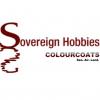

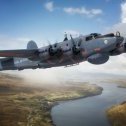
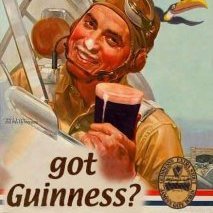

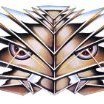
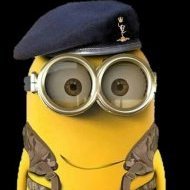
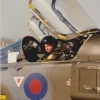
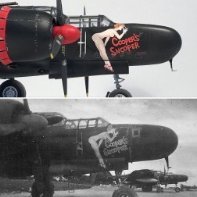

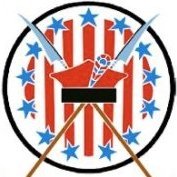
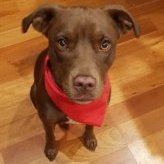
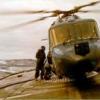
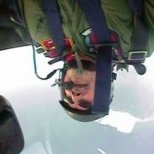
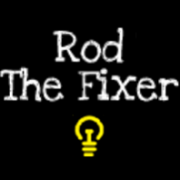
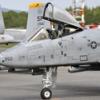
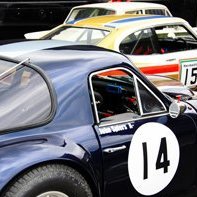
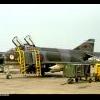
Wedge-TailedEaglePortraitRaptorDomains.thumb.jpg.41a306d3445a68f0f2df773e01776ea6.jpg)

